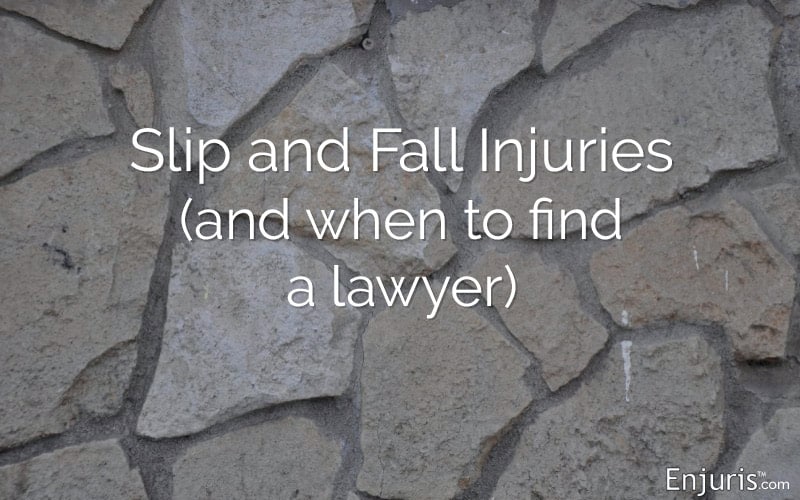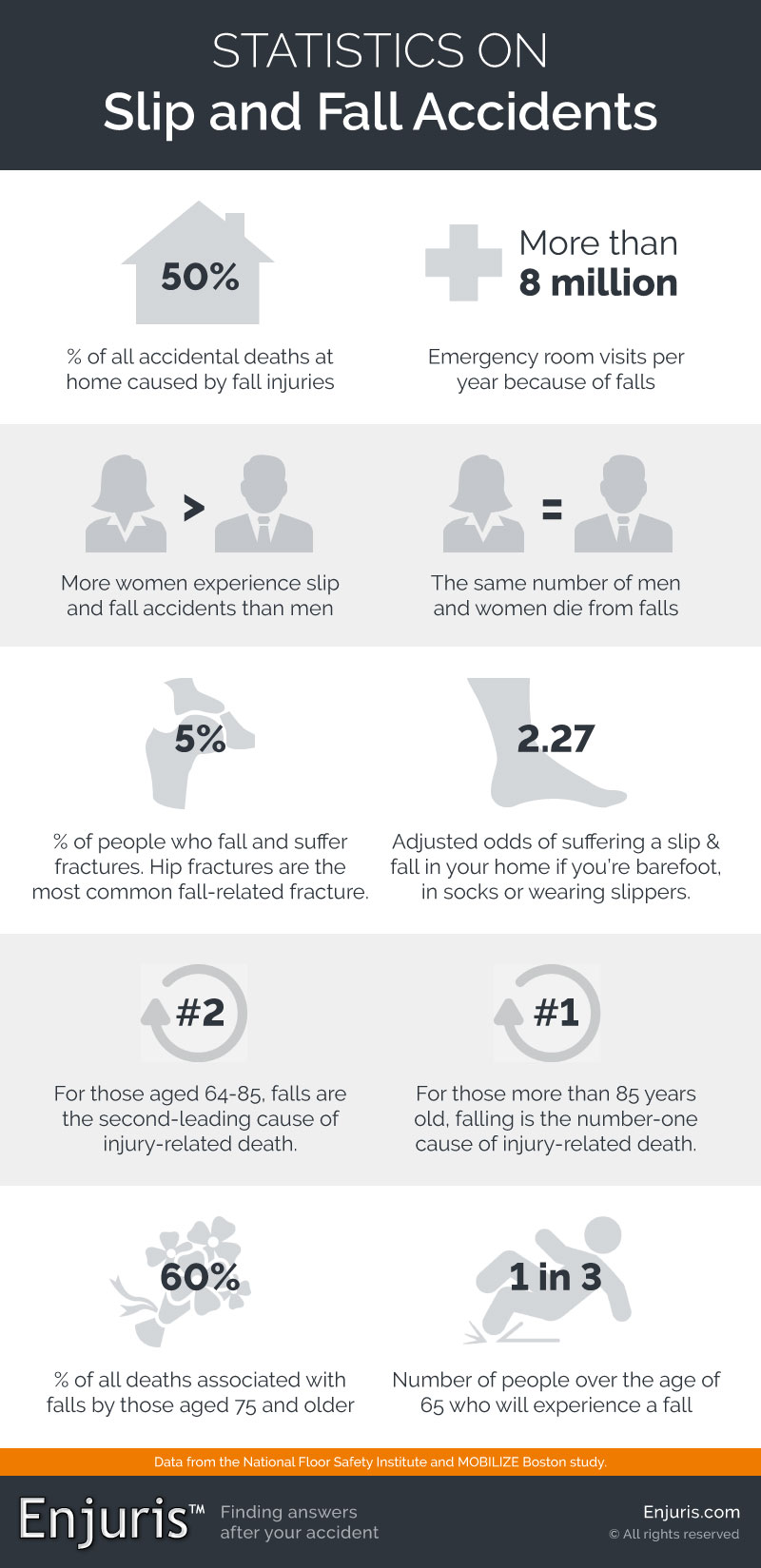
Everyday accidents that lead to large medical bills
Tripping over something you didn’t see or slipping on a wet surface are two of the most common reasons why people suffer “slip and fall accidents.” (The statistics regarding people who slip on banana peels is still undergoing scientific evaluation.).
Tweet this
This type of accident falls under the purview of premises liability and can happen anywhere, on any surface, at any time. When looking at legal questions around slip and fall accidents you’ll need to consider whose property it is - and can they be held accountable for your accident? But first, let’s examine more surprising slip and fall statistics.
Slip and fall statistics
Thousands of people sustain a range of injuries every year from slipping and falling, ranging from a minor head-bump to being crippled. The National Floor Safety Institute has discovered these startling statistics.

Statistics on Slip and Fall Accidents
View Full Size Get the Code Use this graphic on your site
Use this infographic on your site
We encourage people to use our infographics, with proper attribution. Just copy and paste the code below to use this infographic on your site. If you need help, let us know!
<a href="https://www.enjuris.com/premises-liability/slip-and-fall-injuries/" target="blank"><img src="https://www.enjuris.com/infographics/2018/statistics-on-slip-fall-accidents.jpg" alt="Statistics on Slip and Fall Accidents" title="Statistics on Slip and Fall Accidents" style="width: 100%; max-width: 800px; display: block; margin: 15px auto;" /></a>
Since the risk of falling increases with each decade of age, this health hazard will only become more prevalent as life expectancy increases.
Most common types of slip and fall locations and injuries
According to the National Safety Council, falls at home most common occur in the following areas:
- Doorways
- Stairs
- Ramps
- Ladders
- Uneven surfaces
- Crowded areas
Tweet this
Conversely, the following are the most common locations for falls to occur in public or at a business:
- Parking lots
- Slippery floors
- Sidewalks
- Stairs
- Collision with an object, such as a light post
- Tripping over uneven carpeting
- Falling from a ladder, forklift or other equipment used in a work setting
Regardless of how the slip and fall accident occurred (or where), it can result in serious injuries. Some of the most commonly treated problems associated with falls include:
- Broken hips
- Broken pelvic bones
- Back and spinal cord injuries
- Head injuries
- Neck injuries
- Torn ligaments in the wrist, foot or leg
Wear your shoes – and other tips to prevent slips and falls
By following a few common-sense rules, people can keep themselves and others safe from serious injury. This starts with wearing the proper footwear, those with firm soles and tight laces. It sounds rudimentary, but one would be surprised at the number of shoe-related injuries. (The study found compelling evidence to suggest it would be safer to wear shoes in your home.)
Whether a liquid spill happens at home or in public, wipe it up immediately or bring it to an employee’s attention. Keep clutter to a minimum at home so that the space is safe for everyone walking through it. Replace burned-out lightbulbs in stairwells and entryways. Smooth out carpets, shovel snow, melt ice and keep pathways clean of debris. We’d be interested to hear of slip and fall statistics on these items – have some to share? Let us know!
The last thing you want is for someone to get hurt on your property because of something you neglected to do.
Injuries from your fall – do you have a lawsuit?
Negligence on the part of others is often the cause of slip and fall accidents.
A good example of this is a tenant of an apartment building who falls down the stairs because the property owner did not install proper lighting and he did not remove obstacles from the stairwell.
When to seek a personal injury attorney
Although it might take only a few seconds for you to fall, the physical pain and medical expenses can last the remainder of your life. When the situation is caused by someone else’s negligence, whether intentional or not, the injured victim may be entitled to compensation by filing a personal injury lawsuit.
A personal injury attorney can help you navigate these waters as quickly and painlessly as possible. If you need help picking a lawyer, consider looking through the Enjuris law firm directory. Find a lawyer well versed in slip and fall cases who can help you move forward.
- When do you need a lawyer?
- Personal injury myths - what you need to know
- Choosing a personal injury attorney – interview questions
See our guide Choosing a personal injury attorney.
